For all the complaints about British weather, one thing we can be grateful for is the lack of truly terrifying spiders.
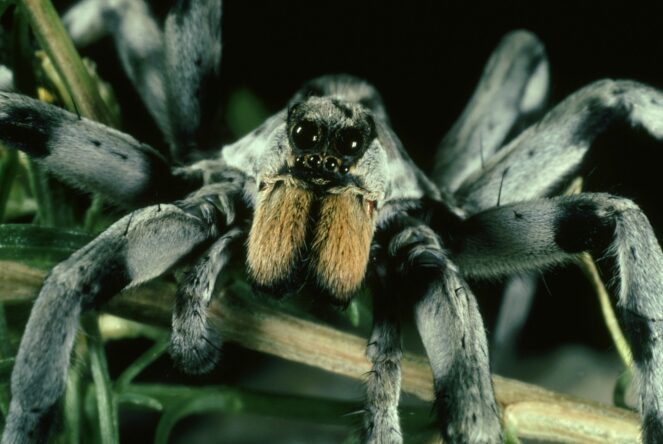
Sure, we have a few harmless house spiders that scuttle around, but we don’t have to worry about deadly bites, aggressive behaviours, or accidentally sitting on something that could land us in the hospital. Meanwhile, other parts of the world aren’t so lucky. Here are just some of the venomous spiders we’re fortunate to avoid in the UK.
1. Sydney funnel-web spider (Atrax robustus)
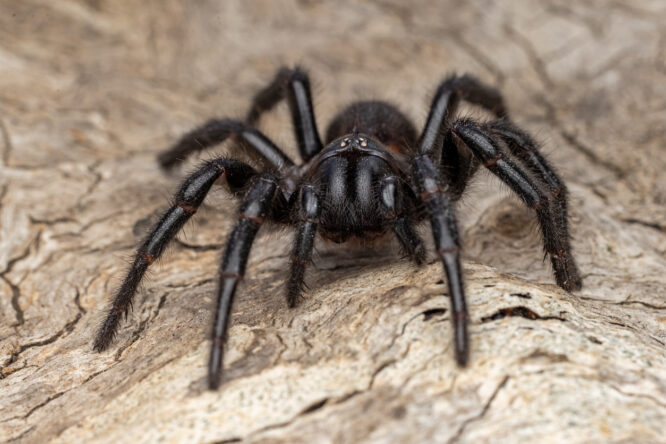
If there’s one spider you definitely wouldn’t want lurking in your garden, it’s this one. The Sydney funnel-web is one of the most venomous spiders in the world, with a bite that can be fatal to humans in just a few hours.
Found mainly in Australia, this spider is notorious for being aggressive when threatened. Unlike most spiders that scurry away, the funnel-web rears up and strikes repeatedly, injecting a venom that attacks the nervous system. If this spider existed in the UK, there’s a good chance half the population would refuse to step outside.
2. Brazilian wandering spider (Phoneutria spp.)
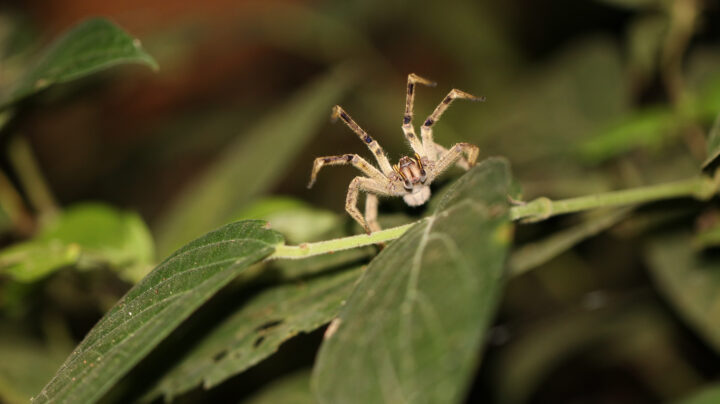
Nicknamed the “banana spider” because it’s been known to hitch a ride in fruit shipments, the Brazilian wandering spider is not something you want to find in your shopping bag. It’s highly venomous, delivering a bite that can cause intense pain, breathing difficulties, and even paralysis.
What makes this spider particularly unsettling is that it doesn’t build webs—it just roams around at night, looking for prey. If this spider was native to the UK, no one would ever feel safe walking around in the dark again.
3. Six-eyed sand spider (Sicarius spp.)

This nightmare of a spider is found in deserts and is an expert at hiding in the sand. While bites to humans are rare, its venom is highly toxic and can cause necrosis—essentially killing off skin and muscle tissue.
There’s no known antivenom, and if one of these ever showed up in the UK, beach holidays would be ruined forever. Thankfully, it prefers hot, dry climates, so we’re safe for now.
4. Redback spider (Latrodectus hasselti)
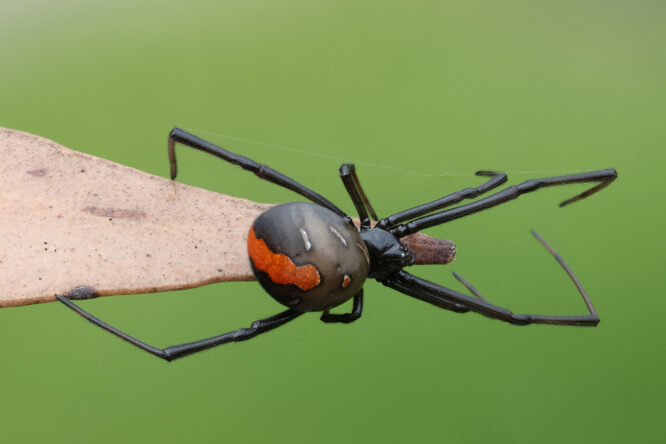
Australia’s version of the black widow, the redback is a small but highly venomous spider that loves to hide in sheds, garden furniture, and even under toilet seats. Its bite can cause severe pain, sweating, nausea, and muscle weakness.
While bites are rarely fatal thanks to antivenom, they’re definitely not something you’d want to experience. If these spiders lived in the UK, nobody would ever sit down without checking the toilet first.
5. Black widow spider (Latrodectus spp.)
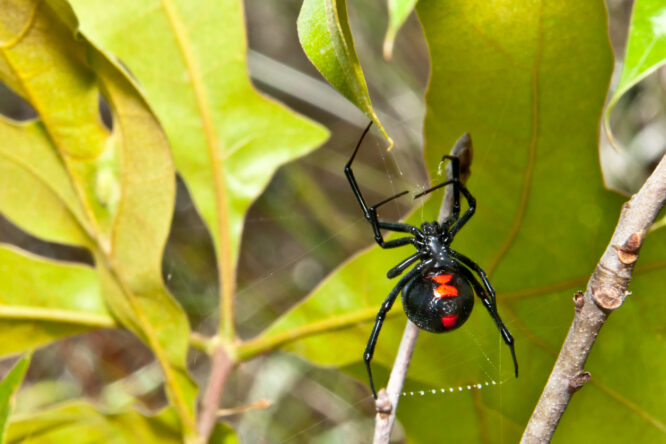
Probably the most famous venomous spider, the black widow has a reputation for being both deadly and sinister-looking. Its venom is 15 times stronger than a rattlesnake’s, causing muscle cramps, nausea, and in severe cases, paralysis.
While black widows prefer warmer climates, they occasionally turn up in imported goods. If they ever established themselves in the UK, you can bet there’d be a lot more caution around garden sheds and garages.
6. Brown recluse spider (Loxosceles reclusa)

One of the most feared spiders in North America, the brown recluse has venom that can cause necrotic wounds, leading to deep, slow-healing ulcers. While not every bite results in tissue damage, when it does, it’s gruesome.
These spiders like to hide in dark, undisturbed places like old shoes, cupboards, and piles of clothes. If they were in the UK, the days of grabbing something from the attic without hesitation would be long gone.
7. Chinese bird spider (Haplopelma schmidti)
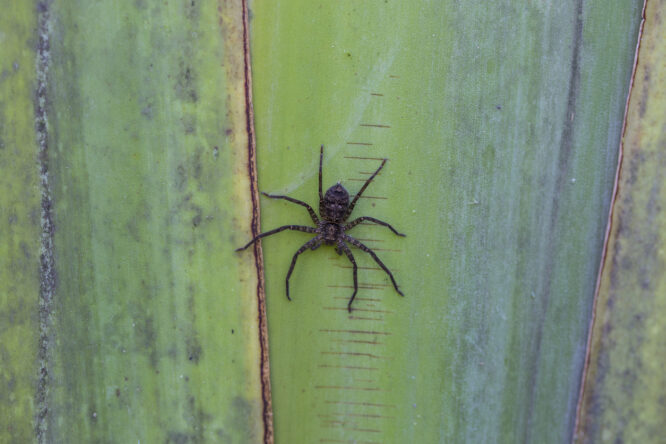
This large, aggressive tarantula is found in parts of China and Vietnam and has venom powerful enough to kill small mammals. While it’s rare for humans to be bitten, when it does happen, the pain is extreme and can cause muscle paralysis.
With a leg span of up to 20cm, this spider is big enough to give anyone nightmares. If it lived in the UK, we’d all have to start checking under the bed before going to sleep.
8. Mouse spider (Missulena spp.)
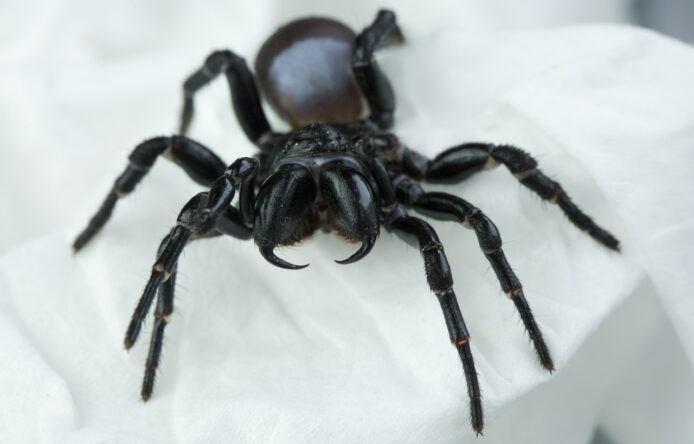
Another Australian menace, the mouse spider looks harmless compared to its funnel-web cousin, but don’t be fooled. It has venom that can cause serious pain and illness, and while it’s not as aggressive, it will bite if provoked.
It’s called the mouse spider because of its furry appearance, but that doesn’t make it any less terrifying. If these existed in the UK, rainy days would feel a lot less cosy knowing one of these could be lurking in a damp corner.
9. Yellow sac spider (Cheiracanthium spp.)
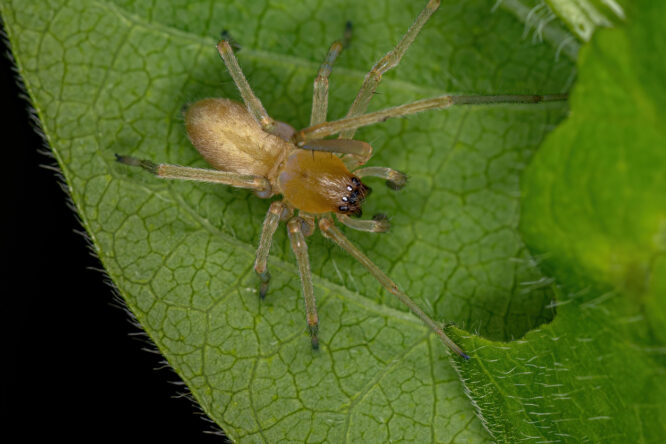
This small but nasty spider is found in North America and Europe, and while its bite isn’t deadly, it causes burning pain, swelling, and slow-healing sores. It’s known for being one of the most common spiders to bite humans.
Yellow sac spiders love hiding in homes, especially in curtains, bedding, and clothing. If they were common in the UK, getting dressed in the morning would suddenly become a much riskier activity.
10. Chilean recluse spider (Loxosceles laeta)
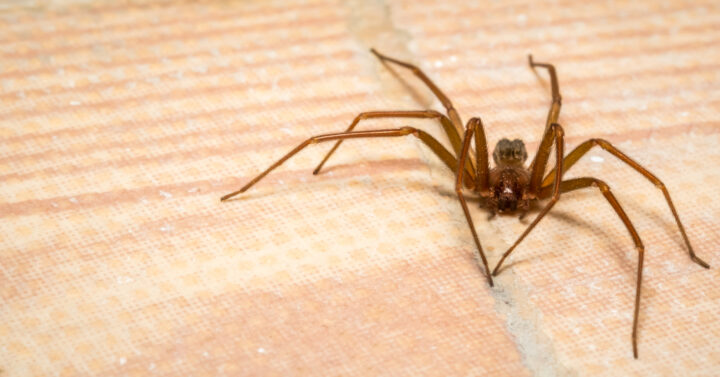
A close relative of the brown recluse, this South American spider has venom that can cause horrific necrotic wounds. In extreme cases, the venom can lead to organ damage and even death.
These spiders like dark corners and are known to be particularly hardy, even surviving extreme weather conditions. If they made it to the UK, every cobweb in the house would suddenly feel like a potential death trap.
11. African baboon spider (Harpactirinae spp.)
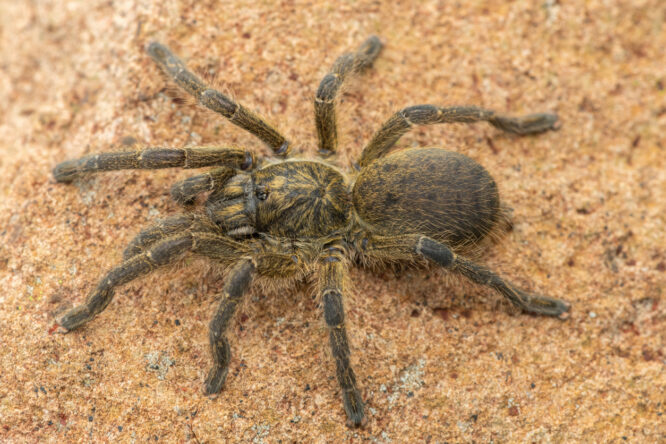
These huge, hairy spiders are found in Africa and have a painful bite that, while not lethal, can cause extreme swelling and nausea. Their sheer size alone is enough to terrify most people.
Baboon spiders are often mistaken for tarantulas, and while they’re not aggressive, they’ll defend themselves if provoked. If they lived in the UK, garden centres would be a whole lot less popular.
12. Mediterranean black widow (Latrodectus tredecimguttatus)

A close cousin of the classic black widow, this spider is found around the Mediterranean and has venom that causes painful cramps, sweating, and muscle weakness. While fatalities are rare, the symptoms can be severe.
Luckily, these spiders prefer hot, dry areas, so they’re unlikely to pop up in the UK anytime soon. If they did, though, sunny holidays in southern Europe might start feeling a lot less relaxing.
13. Fringed ornamental tarantula (Poecilotheria ornata)
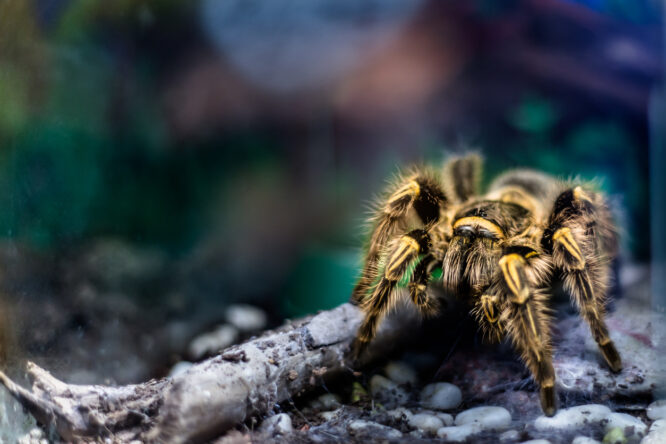
Native to Sri Lanka, this strikingly patterned tarantula is as dangerous as it is beautiful. Its venom isn’t fatal to humans, but it causes extreme pain, dizziness, and muscle cramping.
It’s also an incredibly fast and defensive spider, meaning it won’t hesitate to strike if it feels threatened. If these tarantulas roamed the UK, even the most fearless spider lovers might start thinking twice about keeping one as a pet.




